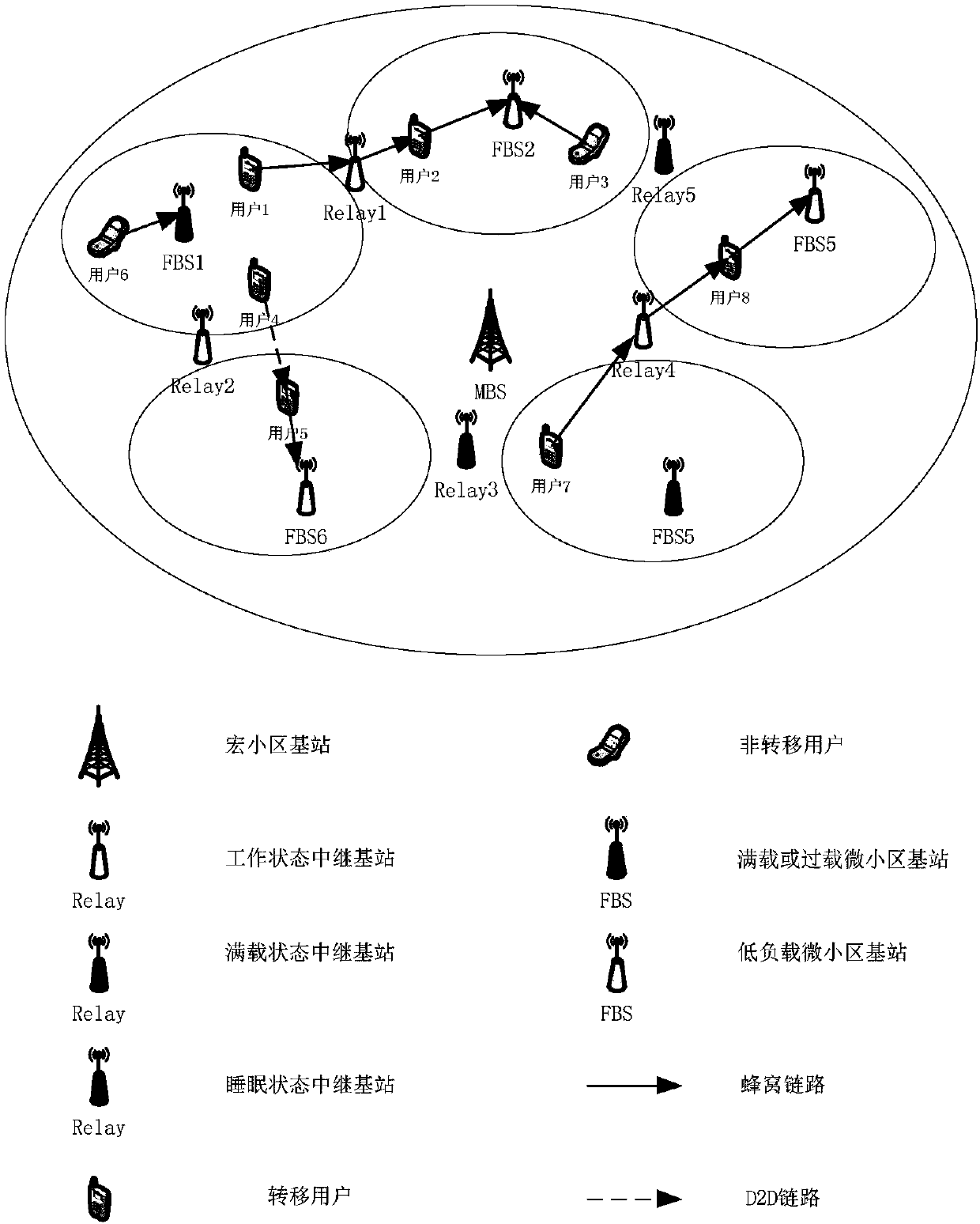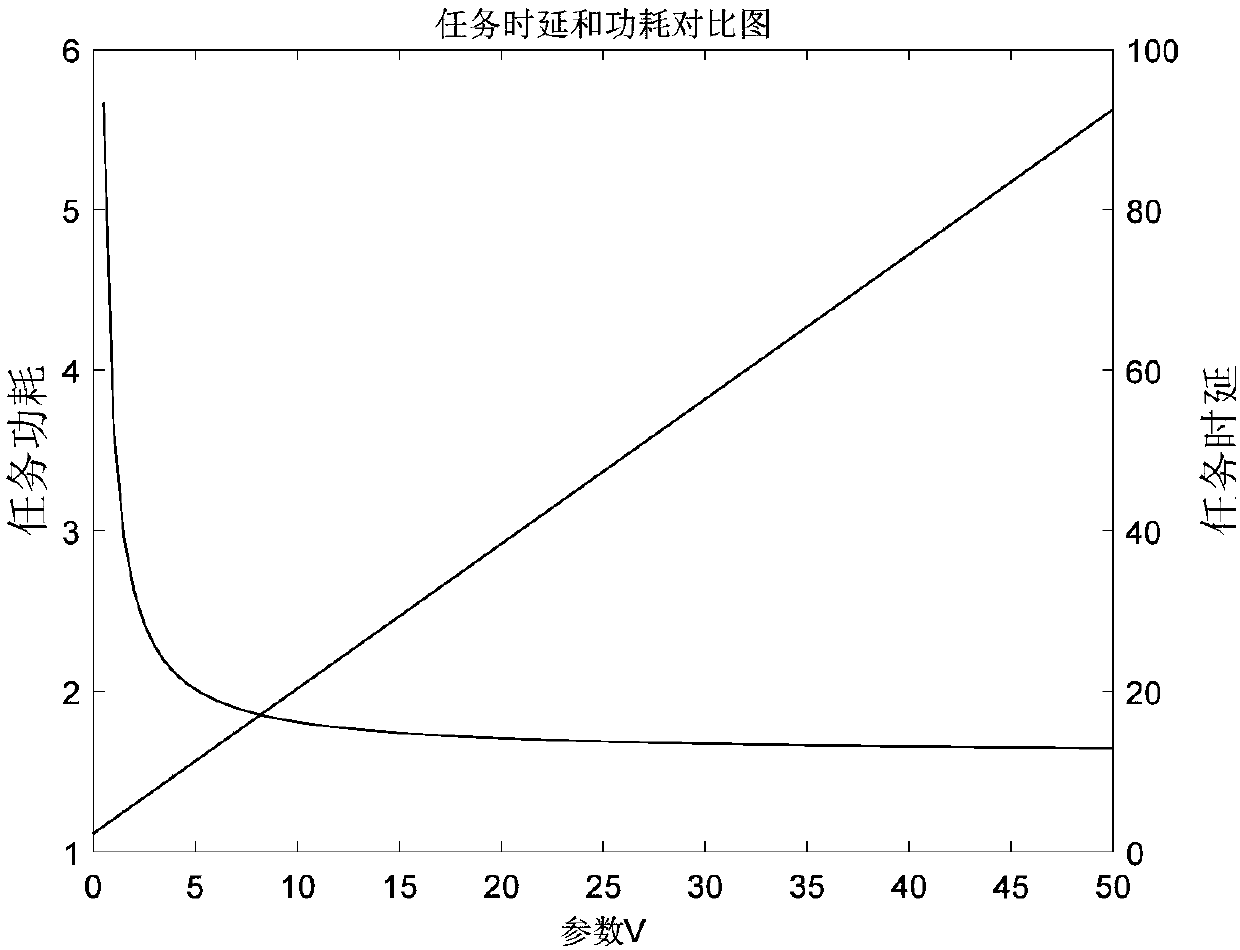Load balancing method based on fog computing and cooperative communication network
A load balancing and cooperative communication technology, applied in the field of mobile communication, can solve problems such as micro-cell overload and waste of computing resources, reduce overall energy consumption and delay, and improve application experience and system performance.
- Summary
- Abstract
- Description
- Claims
- Application Information
AI Technical Summary
Problems solved by technology
Method used
Image
Examples
Embodiment 1
[0053] See figure 1 , figure 1 It is a schematic flowchart of a load balancing method based on fog computing and cooperative communication network provided by an embodiment of the present invention.
[0054] (a) Obtain an overloaded cell;
[0055] (b) acquiring transfer users in the overloaded cell;
[0056] (c) obtaining the transferred cell of the transferred user;
[0057] (d) Obtain the user who finally performs the task;
[0058] (e) Obtaining the task transfer method of the transfer user;
[0059] (f) Transferring the task of the transfer user to the final task execution user for transmission and execution.
[0060] The embodiment of the present invention proposes a load balancing method based on fog computing and cooperative communication network, and provides a better load balancing method by comprehensively considering time delay and user energy consumption.
Embodiment 2
[0062] Please continue to refer figure 1 , on the basis of the foregoing embodiments, this embodiment focuses on a detailed description of a load balancing method based on fog computing and a collaborative communication network. Specifically, the method includes the following steps:
[0063] Step 1. Calculate the load condition of the cell and obtain the overloaded cell;
[0064] The base station is trusted to obtain the load status of all cells within the coverage area, where the load is the ratio of the physical resource blocks (PRBS) used by the cell to the total physical resource blocks. The load is expressed as:
[0065]
[0066]
[0067] Among them, ρ v represents the reference load of cell v, Indicates the total physical resource blocks of cell v, U v = {1,2,...,u} represents the set of users in cell v, M i Indicates the physical resource block occupied by the task of user i, D i The rate of applying for service for user i, R(SINR i ) can provide the transm...
Embodiment 3
[0164] Please refer to figure 2 , figure 2 A schematic diagram of the working principle of a load balancing method based on fog computing and cooperative communication network provided by the embodiment of the present invention; all communication users work in Orthogonal Frequency Division Multiple Access (OFDMA) mode.
[0165] The micro cell base stations FBS1 and FBS5 are in full load or overload state, and need to be load balanced. The role of the macro cell base station in this patent is to macro-control the micro cell base station and the relay base station. The relay base station Relay5, due to the load of the micro cell base station near the base station They are all in a low-load state and do not need load balancing. Therefore, the macro cell base station MBS will send light sleep control information to the relay base station, making the base station in a light sleep state, reducing the energy consumption of the relay base station, thereby reducing the overall energ...
PUM
 Login to View More
Login to View More Abstract
Description
Claims
Application Information
 Login to View More
Login to View More - R&D
- Intellectual Property
- Life Sciences
- Materials
- Tech Scout
- Unparalleled Data Quality
- Higher Quality Content
- 60% Fewer Hallucinations
Browse by: Latest US Patents, China's latest patents, Technical Efficacy Thesaurus, Application Domain, Technology Topic, Popular Technical Reports.
© 2025 PatSnap. All rights reserved.Legal|Privacy policy|Modern Slavery Act Transparency Statement|Sitemap|About US| Contact US: help@patsnap.com



